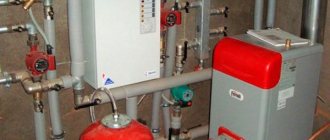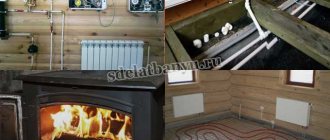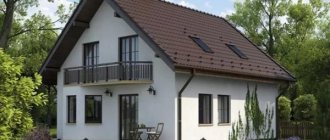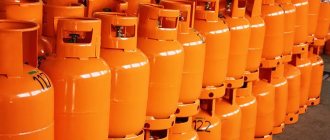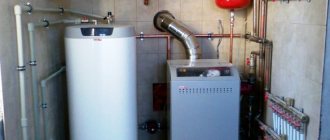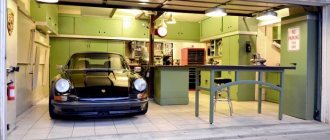A radiator heating system and heated floors are not the only way to heat a room. Recently, warm baseboards have become increasingly popular. This type of heating appeared on our market only a few years ago and there is not much experience in its operation yet. However, it is quickly gaining popularity - it is the most discreet and very comfortable type of heating.
Warm baseboard - small heaters located along the floor around the perimeter of the room. They are named so because of their location and size: the thickness of such a heater is 2.5-3 cm, which is comparable to the size of a standard floor plinth. The height is larger: 12-15 cm, but everything looks organic. What is important: such a system does not limit the installation location of furniture and decorative items, since heat is transferred not by convection, but by radiation.
This is what baseboard heating looks like. No more other heating devices
Operating principle and differences
Manufacturers of baseboard heating claim that the system is more economical than all other types of heating. Savings are 20-30%. This happens because lower temperatures are required to achieve a comfortable feeling. This is because most of the heat is transferred by radiation rather than by convection.
Almost all existing heating systems do not create the best thermal picture: warm air accumulates at the top, while cold air remains at the bottom. If the room does not have very high ceilings, the situation is tolerable, but in rooms with large heights this is critical. To equalize the temperature picture, forced convection is used: fans are built into heating devices that more or less effectively mix the air masses. But active air movement carries dust and germs. At the same time, stagnant zones still remain in the corners of the rooms, in which cold air accumulates.
When using baseboard heating there is no thermal cushion at the top, the air is fresh and the feeling is comfortable
Uneven temperatures and dust in the air are not all the troubles of convection heating. There is also dampness that appears on the walls. The fact is that convection heats the air. The walls remain cold. When warm air comes into contact with cold walls, condensation occurs, the walls become wet, and fungi and mold develop. Moreover, this picture is typical for houses and apartments with good insulation.
Baseboard heating works differently. The first important difference: the lower layers of air immediately heat up, which is already comfortable. Gradually and slowly rising up along the walls, the air cools, transferring heat to the walls. Therefore, it turns out that the top is not warmer (or not much warmer) than the bottom.
Only about 20-30% of the heat is spent on heating the air by convection. Everything else goes to heating the walls. And this is the second important difference. The heated air rises along the walls, rather than mixing with the rest (this effect was noticed by the scientist Coand). Therefore, the rising warm flow cuts off the cold from the walls and heats them. Yes, while the walls heat up and dry out, a lot of energy (and fuel) is consumed. But after that the entire surface begins to radiate heat.
This is where the savings zone begins: a person feels comfortable if the wall temperature is 36-37oC and the air temperature is 16oC. We simply feel the heat emanating from the walls with the entire surface of the body. At the same time, the cost of maintaining the temperature of dry walls is low. After all, it is the water contained in the materials that is the best conductor of heat, and the air that replaces it, on the contrary, conducts heat poorly.
This is what one of the options looks like up close
That is why with such heating it is not so important whether there are pieces of furniture along the walls or not: it is mainly the walls that are heated, not the air. Let them take away some of the heat, but then they themselves will begin to give it back. But the walls will heat up anyway.
Installation of a water baseboard system
The technology for assembling water baseboard heating includes the following operations:
- First you need to measure the distance between the location of the baseboard and the distribution manifold. Next, you need to cut two lengths of the protective pipe, and two exactly the same, but with an allowance of 20 cm - they will act as connecting pipes. The connecting pipe is inserted into the protective pipe, after which their edges are covered with adhesive tape to prevent dirt from entering.
- The pipes are laid along the floor in such a way that, if necessary, several additional ones can be placed next to them. Each pipe is fixed with mounting tape, covered with a protective layer to prevent damage to the structure, and placed on the wall in the desired area. The distance from the floor should be 6 cm, from the edge of the wall or corner - 10-15 cm. Final fixation is carried out using cement.
- When the installation of the finished floor is completed, you can continue installing the baseboard heating. An insulating strip is glued along the entire length of the structure and an aluminum edge is stretched, which will cover the junction of the wall and the floor covering. The edge is fixed with any fastening material.
- A special profile is laid along the top line of the structure. Later, holders are put on it. The distance of the holders from the corners is 15 cm, the installation step is 40 cm.
- Heating pipes are connected to heating elements using couplings, bushings and gaskets. Rotating elements are installed in the corners, and end rotating tubes and plugs are installed at the end sections. Individual sections of devices are connected to each other using adapters.
- When the heater sections are connected, they must be carefully inserted into the holders. Next, decorative panels and corner parts are mounted using screws or latches. The assembled system is connected to the distribution manifold, filled with water and tested for leaks (both operating and maximum pressure must be used during testing).
If each stage of installation was carried out correctly, then baseboard heating will be able to work normally. If leaks are detected at the inspection stage, weak areas must be tightened with a wrench. Since the circuit is supplied with coolant through heating equipment (a boiler or a centralized system), it is imperative to ensure that it is operational.
Types of heating baseboards
Structurally, the baseboard heating system consists of a heating module covered with a decorative aluminum strip. The heating module consists of two copper tubes on which aluminum plates are mounted. Copper is known to have high heat transfer and high resistance to corrosion, but has a high price. Aluminum also transfers heat well and is much cheaper. This copper + aluminum combination is used in many heating devices and has proven its effectiveness.
Read about copper and copper-aluminum radiators here.
This is a baseboard heating design
There are two ways to heat the heat transfer module: using a coolant (water or antifreeze) and an electric heating element. On this basis they differ.
Electric heating
Special low-temperature heating elements are inserted into electric baseboards. They heat up to a maximum of 60 oC. At the same time, their power is more than enough: one linear meter produces about 180-280 W. Electric heaters are inserted into the lower tube, and a cable in a special sheath is laid into the upper tube. With its help, voltage is supplied to all sections of the heating element. The length of one is from 70 cm to 2.5 m, and from different lengths of heaters the power necessary to heat the room is collected.
A special heating element is inserted inside the copper tube. This is how you get an electric warm baseboard
Water warm baseboard
When using water or antifreeze to transfer heat, the same modules are connected into a single heating circuit. There is only one limitation: for maximum heating efficiency, the length of one circuit should not be more than 12.5-15 m (different lengths for different manufacturers).
If there are several circuits for installing a warm water baseboard system, it is convenient to connect a collector (comb). You can use the most common model or with flow meters - it’s your choice. Heating modules for the water heating method are selected based on the required power for a specific thermal pressure of the system.
Combs for warm baseboards are similar to combs for heated floors. Read about them here.
Calculation of the length of the heating element
The thermal pressure of the system ΔT is the difference between the temperature of the heating device and the air (tb). The temperature of the heating device is calculated as the arithmetic mean between the temperatures of the supply (tp) and return (to) pipelines.
ΔT = ( t p + t o)/2 - t in
Let's calculate the pressure for a system with a supply of 90 oC, a return of 70 oC, and the air should be 20 oC. It turns out ΔT = (90 + 70)/2 - 20 = 60 oC. This mode is called high temperature.
Baseboard heating does not work with these parameters. Typically, the difference between the supply and return temperatures is no more than 5 oC. Optimal mode: supply 60 oC, return 55oC. When maintaining +20 oC in the room, the thermal pressure of the system will be ΔT = (60+55)/2 - 20 = 37.5 oC.
If the parameters of your system are similar, determine the required length of the heating module in the column with this thermal pressure. If the parameters are different, find the value for your temperatures.
Below is a table of the thermal power of Mr.Tektum baseboard heating. The designations are slightly different, but the principle is the same. Find the required value of thermal pressure, and, in the corresponding column, find the power per linear meter for your system. Knowing the heat loss of the room (read how to calculate it here), you can determine how many meters of heating element you will need.
Table of dependence of the power of a warm baseboard on the temperature delta (thermal pressure)
For example, at ΔT = 37.5 oC to compensate for room heat loss of 1500 W, the thermal power (according to this table) is 162 W. This means that you will need 1500/162 = 9.25 m of heating element.
What and how to connect
Having gained the required length in total, distribute it around the perimeter of the room, combining it into closed contours. Heater sections are connected to each other in several ways:
- flexible stainless steel pipes with union nuts or under a press;
- copper pipes and fittings for soldering;
- copper or brass threaded fittings.
The most reliable connection method is copper pipes for soldering. This option is also suitable for central heating systems, since such connections can withstand up to 30 bar. The most difficult thing to do is assemble with threaded fittings: the dimensions and distances between the tubes and from the wall are small, making it very inconvenient to work. Flexible pipes must be chosen that are reliable: heating and hot water require good quality.
Connect the heating elements of heating baseboards using hoses and copper pipes
The line from the boiler or floor comb must be made of materials compatible with copper: polymer (polyethylene and reinforced polypropylene), metal-plastic or copper pipes.
System Features
The system is compatible with boilers of any type using any fuel. But there is one feature: for normal heat transfer, a high speed of coolant movement is required. With natural it will simply be ineffective. Therefore, it is important to choose the right pump.
Preparation for installation
First of all, you need to prepare a set of tools for work:
- A hammer drill or a drill suitable for perforating;
- Hammer;
- Wire cutters;
- Pliers;
- Plastic scissors.
In order for baseboard heating to be installed quickly and efficiently, you need to prepare all connection points in advance. To simplify the work, it is worth creating a system design in advance, selecting suitable heating devices and how to place them in the rooms.
Scope of application, prices, manufacturers
You can install a baseboard heater in any room for any purpose. There are special models for high humidity conditions. From a design point of view, they are almost ideal: they do not spoil the interior and do not attract attention. It feels very comfortable to be in such a room: the air is fresh and there are no foreign odors.
There is only one feature: they are effective in homes with permanent residence. At a minimum, with constant heating at low temperatures and periodic increase to a comfortable level. The fast heating mode is not their area of application: the power is low. Requires long heating time.
There are both European and domestic manufacturers on the market. With prices and quality as usual: Europeans have beautiful, reliable, expensive; Domestic ones are cheaper, but worse made. And the difference is not only in appearance. This is often more or less normal. The problem is the occurrence of creaks and clicks in the system during sudden heating and cooling. This problem is typical for the connection of two metals: different temperature expansion provokes the occurrence of this effect. Europeans have been producing such equipment for decades and have learned to deal with it. Ours don’t know how yet. So this is the feature. Based on this, whenever possible, install warm baseboards from trusted and venerable manufacturers in your bedrooms.
There are models with copper plates. They have very high heat transfer and corresponding prices
By names and countries of manufacturers something like this:
- Chemo Thermboard - Austria
- Best Board Austria
- Termaskert - England
- Thermia - Ukraine
- Aurora - Ukraine
- Mr. Tectum - Russia
- KZTO - Russia
Tips for use
It is best to turn on baseboard heating in the off-season or during periods of severe cold. Using any type of it as an independent source of heating is allowed only in small rooms at a temperature outside the window not lower than -15 degrees Celsius. Otherwise, there will be practically no heating effect, and the energy consumption will be enormous.
Before each turn on, be sure to check the integrity of the entire system.
After the off-season period, it is necessary to disassemble the baseboard heater, carry out a visual inspection , and, if necessary, replace damaged parts.
It is not recommended to leave such a heating system of any type turned on unattended for a long period of time, even if there is a thermostat.
And yet, if any problems are detected in the operation of the baseboard heater, it is best to call a specialist rather than try to solve the problem yourself.
The following video provides an overview of the Megador electric baseboard heater, which allows you to save energy by heating the wall and reducing heat loss.
Advantages and disadvantages
The advantages are as follows:
- Uniform heating of the room without cold and warm zones.
- Oxygen is not burned.
- Reducing the cost of maintaining a comfortable temperature by lowering it by several degrees
- Heating occurs by thermal radiation from warm walls.
- Ease of integration into any interior.
- Easier installation (compared to heated floors).
If you do not take into account the statement “they will not heat anything,” one drawback has so far been identified: the high price. There is another one, but indirect: a warm water baseboard - a multi-component system. It’s not easy to design and connect everything correctly. Electric skirting boards are a little easier, but require skills in working with electricity. That is, in both cases, installation by professionals is desirable, or detailed clarification of details and features from dealers or manufacturers.
The principle of operation of baseboard heating in a graphical representation: at head level (approximately 1.6-1.7 meters) the temperature reaches a comfortable 18-20 oC
Installation of an electrical skirting system
To install warm electric baseboards, you need to install a separate circuit breaker in the distribution panel. The power of the switch is calculated depending on the number and parameters of the skirting boards used.
The installation technology for electric baseboard heating is as follows:
- First of all, the electrical network is connected to the distribution box. The box should be located close to the system at a height of about 5 cm from the floor level.
- The wall is sealed with insulating tape.
- Next, the lower aluminum edge and the upper profile are attached to the wall. Holders are attached to the upper profile. The installation parameters for the holders are exactly the same as in the case of the water system - 15 cm from the corners, installation step - 40 cm.
- The next step is to install a remote thermostat. This element is installed opposite the radiators. Installation height – 1.5 meters, distance from the heating system – from 2 meters.
- Heating elements are installed in the lower pipe of the heating module. The modules must be fixed in holders so that they do not have direct contact with the wall. The modules are connected in parallel using a power cable. The cable must have a silicone coating and heat resistance up to 180 degrees.
- The upper part of the structure is closed with a plastic box.
It is not recommended to install electric baseboard heating yourself. It's all about a complex wiring diagram, the arrangement of which requires high qualifications and a set of measuring instruments.
How to make a warm baseboard with your own hands
Even if made in Russia, this pleasure is not cheap. But what if you want to try such a system, but don’t have a lot of “extra” money? Do it yourself. There are two working options.
Option one
Unannealed copper pipes with a diameter of 12 mm and roofing copper sheets 0.4 mm thick were used. The order of work is as follows:
- Cut a strip of roofing copper (60 cm) with a grinder into strips of 15 cm.
- The edges of the full length strips should be beaded at an angle of 90o and the flange length is 7-8 mm. The length of the strips is no more than 3 meters - it is inconvenient to work with large pieces.
- Solder copper tubes to the back side of this plinth. To do this you need solder (plumbing solder containing 3% copper) and a torch. When soldering, point the torch at the tube: the strip is thin and will warp if overheated. The tube can withstand heat normally.
- Bend the ends of the tube slightly before soldering. This will make it more convenient to put adapters on them.
- For assembly, oil and petrol resistant hoses were used that can withstand working with coolant up to 120 oC (internal diameter 12 mm). At the connection points with the pipe they were secured with ordinary clamps.
- To regulate the temperature, a manually adjustable thermostat is installed.
- The joints are covered with similar inserts/plinths made of copper, but without pipes.
- The panels are attached directly to the wall using standard mounting clips (by the pipes). Do not insert them into the recesses - most of the heat is lost.
This system has worked in a wooden house for 9 years. There were no problems or need for repairs. The coolant temperature at the inlet is from 50 oC to 70 oC. In a room, 20-21 oC when rising is too hot.
Watch the video about the features of installing warm baseboards. May be useful.
Second option
In this case, aluminum profiles for working with drywall were used to make a warm baseboard with your own hands. Holes are cut (sawed) in them with a grinder at the top and bottom, after which they are attached to the walls. Two copper pipes are laid on a thin aluminum ceiling profile, screwed with aluminum wire. This entire structure is laid inside and fixed to the wall so that the pipes are one above the other. The pieces of such a homemade plinth were assembled by welding with copper pipes and fittings. “Front panel” is the same profile, only painted with radiator paint to match the walls (floor). This homemade warm baseboard is less effective and more difficult to clean, but it is also very functional.
Interior use
With the help of baseboard heating you can realize original design ideas. Slim and attractive heaters look great with the overall design of the room. This device can be combined with any furniture set, appliances, antique items and modern elements. The warm baseboard box can be made in various colors, so it is easy to match it to any interior. The surface of the material can be flat and smooth. For classic styles, choose options with a stone or wood texture.
The plinth can be easily matched to any interior
Skirting radiators are installed even in country and country houses, whose owners strive to achieve a sophisticated look for their homes. In apartments, the system is used to heat balconies and loggias. A heating baseboard will be the best solution for rooms with high ceilings that cannot be heated by conventional radiators. This type of heating is suitable for greenhouses, gyms, and swimming pools. It is often installed in museums and concert halls.
The purchase and installation of a baseboard heating system will cost more than a standard heating device. Such designs are not cheap, but they are of better quality and more efficient.
Calculation of baseboard heating
When making thermal calculations of heating, it is necessary to take into account the size and geometry of the room, the material of all surfaces, and the degree of insulation of the parts of the heating device. This matter is quite complex, so you need to spend a lot of time on it to install everything correctly.
When calculating the baseboard, you need to carefully measure the area of the room
As a result of the analysis of numerous calculations, the average derived figure is usually taken. To properly heat one square meter of room area, you will need 100 W of heat energy. The power of the heating baseboard is calculated by multiplying the area of the room by 100. The resulting figure is the amount of heat that all the heating elements of the warm baseboard should give off in total. For more efficient work, you can increase the indicator by 20-25%.
Reviews
“I have a baseboard like this at home. In addition to heated floors. I advise you to install it too. The warm baseboard does its job well. Of course, it cannot be compared with warm floors in terms of power, but still there is noticeable warmth from it.”
Nikolay, Moscow
“I installed heated floors and baseboards. I’ll say unequivocally: the price of the baseboard is cheaper, but I like it better for heating.”
Alexander, St. Petersburg
“I bought a Megador 600 W for a 9 m2 bedroom. At first it worked at full power, but now we set it to maintain 20 degrees at 200 W. This is enough for my area, we don’t need a higher temperature, we don’t like it. And at the same time, on the wall where the heater is located, our ventilation hole is almost always slightly open. I'm happy."
Pavel, Chekhov
As you can see, reviews about warm baseboards are positive. This is no wonder: the heating is efficient, comfortable, and even invisible. The only thing that spoils the picture is the high price, but there are options for making it yourself.
Some installation tips
- Before installing the heater, you need to stick class B1 insulating tape on the wall. It will become additional fire protection.
- Fasteners for electric skirting boards are installed in increments of forty centimeters.
Skirting board connections are made using heat-resistant cable - All cables and connections used must have a high temperature resistance class - at least B1.
Results
Like everything new, the plinth system has many critics and theorists. Their main thesis: “It’s stupid to heat walls and then heat the air. It’s better to heat the air directly, and then start heating the walls.” The point of view is clear. This is what is used for convector heating. But the result and its shortcomings are known to everyone. And for the efficiency of heating the walls, an experiment was carried out: in one room the air was +12 oC, and the walls were heated to +37 oC. And people sweated in it. In another, the air was heated to +40 oC, and the walls were cooled to +12 oC, and people were freezing.
Pros, cons of an alternative heating method
The advantage of another heating method is resource savings. The equipment is connected to the mains, but consumes relatively little energy. It is possible to save about a third of the amount spent by other electric heating devices.
The walls are drier, partially absorb the generated heat, and an additional area of heat loss will appear.
The appearance of the plinth system looks favorable and fits into many interior design styles, but it will not be possible to place cabinet furniture close to the walls. Free circulation is important for heating equipment; furniture will partially absorb heat and deteriorate faster.
Uniform heating of the room is achieved, mold and mildew will not appear.
Installation and repair work is carried out relatively quickly, the equipment is in direct access.
You can immediately install thermostats on the radiators to set a temperature schedule for each individual room.
Advantages, disadvantages of a warm baseboard system
Disadvantages - the cost of skirting equipment. It’s difficult to connect on your own; it’s better to contact a specialist to get a high-quality, working system.
It is necessary to ensure that the company performing the work has valid licenses. When accepting the object, you must make sure that there are no decorative overlays or furniture that is pushed tightly together.
What it is?
A warm baseboard is a distributed modular heating system with the so-called.
"floor" installation. The term “floor” does not mean at all that the elements of such a system are mounted on the floor covering - the fasteners are made on the wall in its lower part in close proximity (at a distance of no more than 1-2 cm) from the floor.
The system received the name “plinth” for the modest dimensions of the modules (up to 3 cm thick and 10-24 cm high), excellent decorative properties and the possibility of installation indoors instead of a standard plinth.
The air is heated by heating modules - water or electric.

